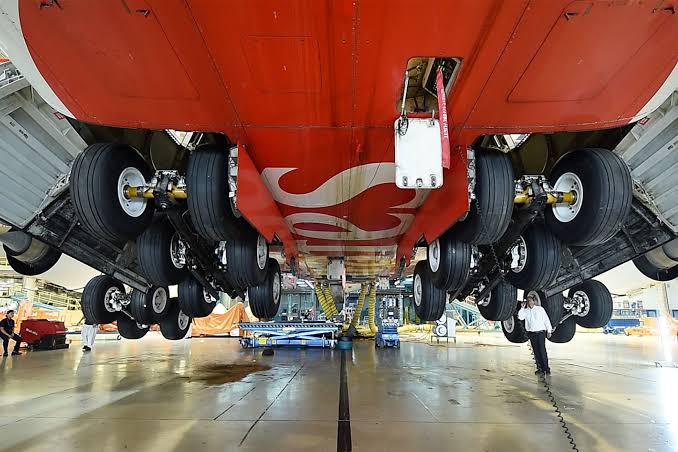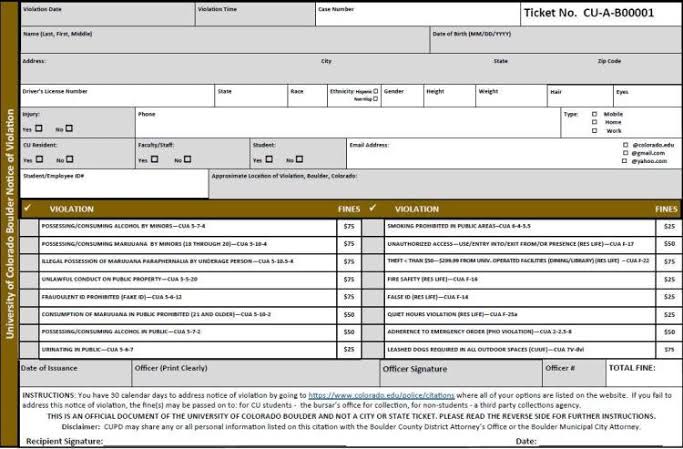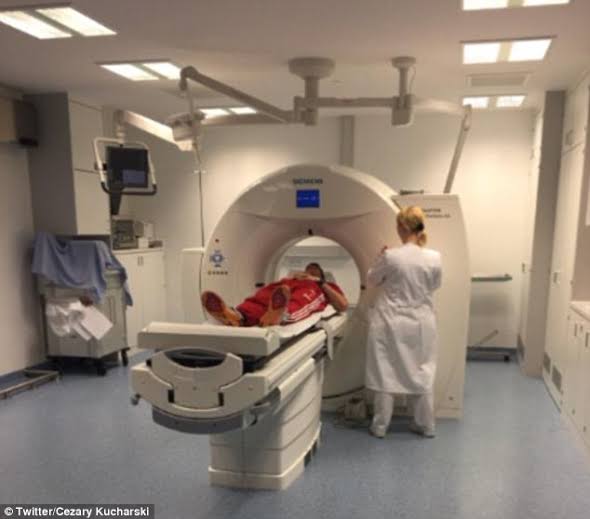Lufthansa Boeing 787 Remains On Ground At Denver After Returning Following Landing Gear Problems
Lufthansa Boeing 787 Remains Grounded in Denver Following Landing Gear Issues
Incident Overview
A Lufthansa Boeing 787-9 Dreamliner remains on the ground at Denver International Airport (DEN) following an inflight landing gear issue that prompted its return. The aircraft, operating as flight LH447, was en route from Denver to Frankfurt on March 29, 2025, when the pilots encountered a problem related to the landing gear. After holding in the air to troubleshoot the issue, the crew ultimately decided to return to Denver, where the aircraft landed safely.
While no passengers or crew members were harmed, the incident has raised concerns about potential mechanical faults with the Boeing 787. Lufthansa engineers and Boeing representatives are now assessing the aircraft to determine the cause of the problem.
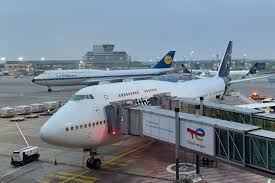
This event underscores ongoing concerns regarding the Dreamliner’s reliability, particularly with respect to landing gear components and hydraulic systems. As the investigation unfolds, passengers and aviation analysts alike are eager to understand whether this was an isolated event or part of a broader issue affecting Boeing’s latest generation of aircraft.
The Flight: A Routine Departure Turns Into an Emergency
Flight LH447, a regularly scheduled Lufthansa service from Denver to Frankfurt, took off from Denver International Airport (DEN) at approximately 6:45 PM MDT. The Boeing 787-9, known for its fuel efficiency and long-haul capabilities, was expected to complete the nearly 10-hour journey to Frankfurt Airport (FRA) without incident.
Shortly after departure, however, the flight crew received an indication that the landing gear had not retracted properly. Reports suggest that sensors detected an asymmetry in the landing gear retraction sequence, meaning one or more of the landing gear components may not have stowed correctly.
Rather than proceeding across the Atlantic with a potentially compromised system, the pilots chose to enter a holding pattern south of Denver, where they worked with Lufthansa’s operations team and air traffic control to assess the issue. After burning off excess fuel to ensure a safe landing weight, the aircraft was cleared to return to Denver.
The Dreamliner landed without incident at approximately 8:15 PM MDT, with emergency crews standing by as a precaution. The aircraft then taxied to a remote stand, where engineers began initial inspections.

Technical Issues with Boeing 787 Landing Gear
While the exact cause of the landing gear failure remains unknown, the Boeing 787 has experienced previous landing gear-related issues. The aircraft’s advanced electro-hydraulic landing gear system has been the subject of scrutiny in recent years.
Common Landing Gear Issues on the 787
Hydraulic System Malfunctions
The Boeing 787 utilizes an advanced hydraulic-electric hybrid system for its landing gear operations. Unlike older aircraft that rely primarily on hydraulic actuators, the 787 employs more electrical components, which can introduce sensor malfunctions and communication errors between the aircraft’s control systems and landing gear.
Proximity Sensor Failures
The Dreamliner’s landing gear relies on proximity sensors to confirm whether the gear is fully extended or retracted. Faulty readings from these sensors have previously caused false alerts, leading pilots to believe the gear was not in the expected position.
Gear Retraction Asymmetry
There have been previous reports of asymmetrical gear retraction, where one side of the landing gear takes longer to retract than the other. This can cause aerodynamic imbalances, potentially forcing a return to the departure airport.
While Lufthansa has not yet confirmed the exact nature of the issue on LH447, early indications suggest the problem may have been linked to a sensor failure or hydraulic system anomaly.
Passenger Reactions and Airline Response
Many passengers onboard were initially unaware of the issue. However, after the aircraft entered a holding pattern and the captain made an announcement about the return to Denver, concerns began to rise.
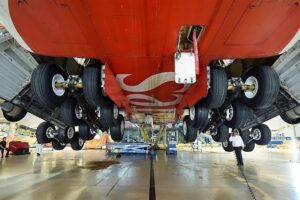
Passenger Statements
One passenger, Mark Redding, who was seated in business class, described the moment the crew informed them of the issue:
“The flight seemed normal until about 20 minutes in when the captain announced we had a landing gear problem. The flight attendants remained calm, but we could tell this wasn’t routine.”
Another traveler, Lisa Thompson, shared her relief upon landing safely:
“I fly frequently for business, and I’ve never experienced an issue like this before. It was a bit nerve-wracking, but the landing was incredibly smooth. The crew handled everything professionally.”
Lufthansa’s Official Statement
In response to media inquiries, Lufthansa released an official statement:
“Lufthansa flight LH447 returned to Denver as a precaution due to an indication related to the aircraft’s landing gear. The aircraft landed safely, and all passengers were accommodated on alternative flights. Lufthansa and Boeing engineers are conducting a thorough inspection to determine the cause of the issue. We apologize for any inconvenience and appreciate our passengers’ understanding.”
Lufthansa quickly arranged rebooking options for affected passengers, ensuring minimal disruption to travel plans.
Investigation and Next Steps
As of March 30, 2025, Lufthansa’s maintenance team is working closely with Boeing engineers to diagnose the issue. Given the complexity of the 787’s systems, a detailed inspection and testing process could take several days.
Key Areas of Investigation
Flight Data Recorder (FDR) & Maintenance Logs
Investigators will analyze flight data from the aircraft’s black box and onboard diagnostic systems to identify anomalies.
Physical Inspection of the Landing Gear System
Lufthansa’s engineering team will conduct a manual inspection of the landing gear components, including hydraulic actuators, electrical systems, and sensor units.
Past Maintenance Records
The aircraft’s recent maintenance history will be reviewed to check for any previously reported landing gear anomalies or deferred maintenance items.
The affected aircraft, registered as D-ABPA, is relatively new, having joined Lufthansa’s fleet in mid-2023. Given its recent entry into service, some experts speculate the issue could be related to a minor manufacturing defect or a software-related anomaly rather than structural wear and tear.
Implications for Lufthansa and Boeing
While this incident ended without injury or damage, it raises questions about the reliability of the Boeing 787’s landing gear system.
For Lufthansa
The airline will need to reassure passengers and regulators that this issue does not represent a systemic flaw in its Dreamliner fleet.
Engineers may conduct additional inspections on other 787-9 aircraft in Lufthansa’s fleet to rule out potential fleet-wide concerns.
For Boeing
This incident could prompt further scrutiny of the Boeing 787 landing gear design and software integration.
If the problem is traced to a manufacturing issue, Boeing may issue service bulletins or require airlines to conduct specific inspections.
Conclusion
The Lufthansa Boeing 787-9’s return to Denver due to a landing gear problem is a reminder of the complexities of modern aircraft systems. While the aircraft landed safely and passengers were rebooked, the incident highlights ongoing concerns surrounding electro-hydraulic landing gear reliability in next-generation aircraft.
As Lufthansa and Boeing work to determine the root cause, passengers will be watching closely to see if this is an isolated event or indicative of a broader trend.
For now, the affected 787 remains on the ground in Denver, awaiting a resolution before it can take to the skies again.
